Brief overview of the Schengen Area
The Schengen Area is a region comprising 26 European countries that
have abolished internal border controls among themselves, allowing for free movement of people, goods, and services within the zone. The Schengen visa enables non-EU citizens to travel freely within the member states for up to 90 days within a 180-day period.
The Schengen Agreement has facilitated economic growth, improved security, and enhanced cultural exchange among its member states. However, it has also faced criticism and challenges related to border control, irregular migration, terrorism, and balancing freedom of movement with national security concerns.
Objectives and principles underlying the Schengen visa regime
- The primary objectives are facilitating the
free movement of persons while maintaining a high level of security, protecting the external borders, and ensuring that non-EU citizens comply with the rules and requirements for entering and staying in the Schengen Area. The key principles include proportionality, non-discrimination, and respect for privacy and data protection.
The European Economic Community (EEC) and the Schengen Agreement - The EEC was established in 1957 with six founding member states, aiming to promote economic cooperation among its members. In 1985, five of these countries (France, Germany, Belgium, Netherlands, and Luxembourg) signed the Schengen Agreement, which laid the foundation for the abolition of internal border controls and the creation of a common visa policy.
Evolution of the Schengen Area
: Expansion and Associated Countries - Over time, more countries have joined
the Schengen Area, including Austria, Denmark, Finland, Greece, Iceland, Norway, Portugal, Spain, Sweden, Italy, and many Eastern European countries after their EU accession. The enlargement process has not been without challenges, as new member states have had to adapt to the common visa policy and border control requirements.
Key milestones and amendments in the Schengen visa policy
: Significant developments include the introduction of biometric passports, the establishment of the Schengen Information System (SIS), and the implementation of the Visa Information System (VIS). These systems aim to improve border control, security, and the efficiency of the visa application process.
The Schengen Information System (SIS)
:
Role of the SIS in maintaining border security - The SIS is an essential tool for sharing information between Schengen member states regarding persons and objects of interest, such as wanted criminals, missing persons, stolen vehicles, and lost or stolen travel documents. It helps to identify potential threats at the borders and improve border control effectiveness.
Data stored and shared between Schengen member states - The SIS contains information on individuals who pose a threat to public policy, internal security, or national security of the member states, as well as data on stolen and lost travel documents. It also stores data on wanted persons, missing children, and lost or stolen vehicles.
Impact of the SIS on visa issuance and border control The Schengen Information System helps to ensure that individuals with a criminal record or other security concerns are not issued a Schengen visa. Additionally, it assists border guards in identifying persons who may pose a threat at the borders, improving border control efficiency and effectiveness.
In 1985, seven European Union countries signed a treaty to put an end to internal border checks. Presently you can travel to 29 European countries using the Schengen visa - Austria, Belgium, Bulgaria, Croatia, Czechia, Denmark, Estonia, Finland, France, Germany, Greece, Hungary, Iceland, Italy, Latvia, Liechtenstein, Lithuania, Luxembourg, Malta, Netherlands, Norway, Poland, Portugal, Romania, Slovakia, Slovenia, Spain, Sweden and Switzerland. Though thirty countries have signed the Schengen agreement, only the above listed follow the common border control and visa requirements. Learn more about Schengen visa procedures and types of Schengen visa.
Schengen Visa
With a cohesive visa system introduced for the Schengen countries, travel in Europe has become much easier. Schengen visa gives you the liberty to enter one country and travel freely all through the Schengen zone. Travel by road, rail, and air is considered as domestic travel within these countries and there is nil or minimal checks in between. With a Schengen visa, you can stay in the Schengen countries for a period of ninety days within a six month period.

Schengen visa authority
Schengen visa is issued by the concerned Schengen country consulate which the applicant plans to visit. Visa applications should be submitted to the concerned consulate in the applicant's consular region.
Applying for Schengen visa
- The Schengen visa is a visitor visa and should be
used only for tourism, business, or leisure.
- Schengen visa holders are not allowed to work or live
permanently in Europe.
- Submit your visa application in the consulate or
embassy of the country where you plan to stay for the maximum period.
- If you plan to visit many Schengen countries but do
not have a main destination then you have to apply for a visa to the first
Schengen country you plan to visit.
- A minimum of one blank page has to be there in your
passport to stamp the visa.
- Visa applications have to be submitted in person
between 0900 and 1100 in the morning to the concerned authority.
- Visa applications are accepted from Monday to Friday,
applications are not accepted on Wednesday.
- Children must possess individual passports.
- The applicant?s passport size photograph in a white
background has to be submitted along with the visa application.
- Visa stamped passports can be collected after three
days from when it was submitted to the authorities. It can be collected
between 1600hrs and 1700hrs.
- A visa for Schengen countries does not guarantee
entry into these countries; the immigration officer at the border has the
final say for entry into these countries.
Visa for Schengen countries
The following documents have to be submitted while applying for a Schengen visa:
- Original passport that will be valid for the next
three months after the visa expiry.
- One copy of the first and the last page of the
passport.
- One/two recent passport size photograph in a white
background measuring 3cmx4cm.
- One copy of the applicant?s travel itinerary along
with return ticket.
- Proof of professional status of the applicant.
- One copy of a valid health insurance policy with
coverage of Euros 30,000.
- Neatly filled up visa application form, all columns
have to be filled using capital case.
Above listed are the basic documents required to apply for a Schengen visa. Depending on the type of visa applied for, authorities might request for additional documents as listed below.
Tourism or private visit: Invitation from the host specifying the type of accommodation.
Training: A certificate of enrollment from the teaching institute specifying the type of training.
Business: An invitation from the concerned authority specifying the purpose of trip, e.g. attending fairs, meetings, etc. Documents to prove the existence of the trade relations or work relationship between the firms need to be produced. Entry tickets for fairs or trades shows are needed for business visas.
Others: Invitation, entry tickets, enrollment copies, proof of medical appointment, etc. Other documents could include proof of accommodation, proof of sufficient funds and transport arrangements.
Types of Schengen visa
Visa A: This is an airport transit visa and allows the person to transit through the Schengen international airport zone, does not allow the person to enter the Schengen territory.
Visa B: This is a transit visa and allows the person to go through the Schengen territories for not more than five days while traveling between two non-Schengen states. They can travel by any means within the Schengen region while en route to a non-Schengen region.
Visa C: This is a short stay visa and allows the person to visit the Schengen region for business, sight-seeing and to visit family. The person can stay for a maximum period of ninety days within the specified 180 days period. This is the most common type of Schengen visa. This is a single entry visa and the applicant can stay for a maximum period of ninety days, uninterrupted.
A multiple entry visa in this category allows the applicant to stay in one or more Schengen regions for a period of not more than ninety days within a half year. This visa is also called the travel visa. In few cases the visa is issued for a five year period.
Visa C: This is a circulation visa and permits short stay within a period of one year. It is used for the purpose of businesses that are supported by an invitation letter from the Schengen country. For e.g. aircrew members, businessmen receiving invitations from counterparts in the respective Schengen country can avail of this type of Schengen visa.
Visa D This is a long stay visa and permits the applicant to stay for a period of more than three months. This visa is issued for students, people who wish to work, people who wish to settle, etc.
Schengen visa fees and processing
The fees charged for an adult business visa, airport transit visa, tourist, and visitor visa is € 90. Visa fees can be paid in Euro, USD, or the local currency of the Schengen country. For a Child it can be € 40-45. Stamped visas can be collected from the respective embassy or consulate three days after the visa application has been submitted.
Cooperation with Third Countries and Visa Facilitation Agreements
A. Diplomatic relations and cooperation with third countries - The EU maintains diplomatic relations and
cooperates with various countries worldwide, aiming to strengthen bilateral ties, promote economic growth, and
address common challenges such as terrorism, migration, and climate change.
B. Visa facilitation agreements (VFAs) and readmission agreements - VFAs are agreements between the EU and
third countries that facilitate the issuance of visas for their citizens, making it easier and faster for them to
travel to the Schengen Area. Readmission agreements address the issue of irregular migration by establishing
procedures for the return of migrants who have entered the Schengen Area illegally.
C. Impact of VFAs on the Schengen visa application process for certain nationalities - VFAs can significantly
reduce the time and effort required to obtain a Schengen visa, as applicants from participating countries may not
need to provide some documents, such as proof of sufficient financial means or travel insurance.
Schengen Challenges and Controversies
A. Irregular migration, asylum seekers, and border control issues - The Schengen Area has faced significant
challenges related to irregular migration, particularly during the 2015 refugee crisis. Border controls have been
tightened, and cooperation between member states on migration policies has become essential for managing these
issues effectively.
B. External and internal security threats - Terrorism, organized crime, and cyber threats pose significant
challenges to the Schengen Area's external and internal security. The EU has implemented various measures to
address these threats, such as the European Border and Coast Guard Agency (Frontex) and the EU's police
cooperation agency (Europol).
C. Balancing freedom of movement with security concerns - The Schengen Agreement aims to ensure free movement
within the area while maintaining adequate security measures. Striking the right balance between these two
objectives can be challenging, as stricter border controls may impact individuals' rights and freedoms, while
weaker controls could pose a threat to public safety.
Disclaimer: These pages are intended to be used as a guide only. Visa information for most countries change often without any advance notice. It is essential that you call the respective country?s embassy before you make your travel plans. Although all due care has been taken in compiling the information available in these pages, the Webmaster or publishers of the CityRound will not be held accountable under any circumstances for any errors or omissions found in these pages.
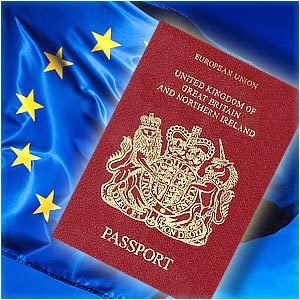
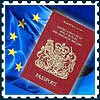 Schengen visa
Schengen visa Chinese Visa
Chinese Visa Taiwan Visa
Taiwan Visa Hong Kong Visa
Hong Kong Visa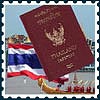 Thailand Visa
Thailand Visa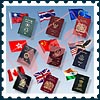 Travel Visa Requirement
Travel Visa Requirement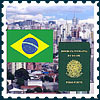 Brazil Tourist Visa
Brazil Tourist Visa New Zealand Travel Visa
New Zealand Travel Visa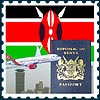 Kenya Visa
Kenya Visa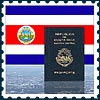 Costa Rica Travel Visa
Costa Rica Travel Visa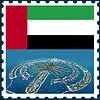 Dubai Travel Visa
Dubai Travel Visa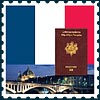 France Travel Visa
France Travel Visa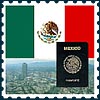 Mexican Travel Visa
Mexican Travel Visa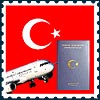 Turkey Travel Visa
Turkey Travel Visa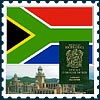 South Africa Travel Visa
South Africa Travel Visa










